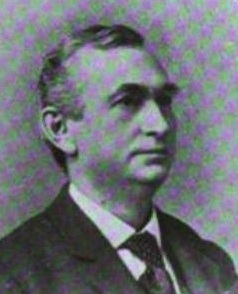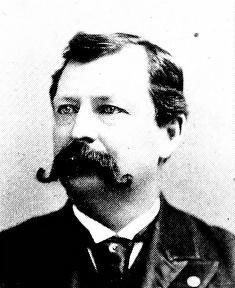Life
He graduated from Geneva Medical College in 1846, and commenced the practice of medicine in Bloomingburg. Two years later he removed to Ellenville. He married Sarah J. Jackson (1828–1912), and they had several children.

Geneva Medical College was founded on September 15, 1834, in Geneva, New York, as a separate department (college) of Geneva College, currently known as Hobart and William Smith Colleges. In 1871, the medical school was transferred to Syracuse University in Syracuse, New York. In 1950, the university sold the college to the State University of New York (SUNY) for $1, where it remains today.

Bloomingburg, previously Bloomingburgh, is a village in Sullivan County, New York, United States. The population was 420 at the 2010 census.

Ellenville is a village in Ulster County, New York, United States. The population was 4,135 at the 2010 census.
He was a member of the New York State Assembly (Ulster Co., 1st D.) in 1852; and of the New York State Senate (10th D.) in 1862 and 1863.

The New York State Assembly is the lower house of the New York State Legislature, the New York State Senate being the upper house. There are 150 seats in the Assembly, with each of the 150 Assembly districts having an average population of 128,652. Assembly members serve two-year terms without term limits.

The 75th New York State Legislature, consisting of the New York State Senate and the New York State Assembly, met from January 6 to April 16, 1852, during the second year of Washington Hunt's governorship, in Albany.

The New York State Senate is the upper house of the New York State Legislature. There are 63 seats in the Senate, and its members are elected to two-year terms. There are no term limits.
He was buried at the Fantinekill Cemetery in Ellenville.
This page is based on this
Wikipedia article Text is available under the
CC BY-SA 4.0 license; additional terms may apply.
Images, videos and audio are available under their respective licenses.

Joseph Hasbrouck Tuthill was a U.S. Representative from New York, nephew of Selah Tuthill.

Jacob LeFever was a U.S. Representative from New York.
The 1863 United States Senate election in New York was held on February 3, 1863, by the New York State Legislature to elect a U.S. Senator to represent the State of New York in the United States Senate.

The 2nd New York State Legislature, consisting of the New York State Senate and the New York State Assembly, met from October 13, 1778, to March 17, 1779, during the second year of George Clinton's governorship, at Poughkeepsie.

The 6th New York State Legislature, consisting of the New York State Senate and the New York State Assembly, met from July 8, 1782, to March 27, 1783, during the sixth year of George Clinton's governorship, first at Poughkeepsie, then at Kingston.
The United States Senate elections of 1862 and 1863 were elections during the American Civil War in which Republicans increased their control of the U.S. Senate. The Republican Party gained three seats, bringing their majority to 66% of the body. Also caucusing with them were Unionists and Unconditional Unionists. As many Southern states seceded in 1860 and 1861, and members left the Senate to join the Confederacy, or were expelled for supporting the rebellion, seats were declared vacant. To establish a quorum with fewer members, a lower total seat number was taken into account.
George T. Pierce was an American lawyer and politician from New York.

The 86th New York State Legislature, consisting of the New York State Senate and the New York State Assembly, met from January 6 to April 25, 1863, during the first year of Horatio Seymour's second tenure as Governor of New York, in Albany.
John J. Bradley was an American politician from New York and one of the members of the infamous Tweed Ring.
Henry R. Low was an American lawyer, judge and politician from New York.
Richard K. Sanford was an American newspaper editor and politician from New York.
Chauncey Milton Abbott was an American politician from New York.
Almanzor Hutchinson was an American farmer and politician from New York.
Henry Sherwood was an American lawyer and politician from New York.
George Chambers was an American physician and politician from New York.
William Frederick Scoresby was an American physician and politician from New York.
Jacob Worth was an American politician from New York.

Jacob Rice was an American politician from New York.
The 80th New York Volunteer Infantry Regiment, the "Twentieth New York State Militia", "Ulster Guard", was an infantry regiment of the Union Army during the American Civil War.
Daniel G. Albert was an American lawyer and politician from New York.












